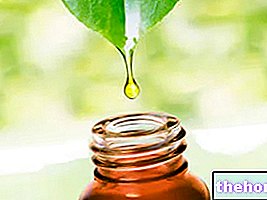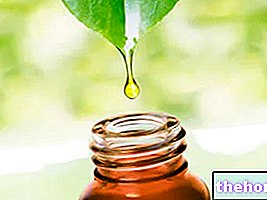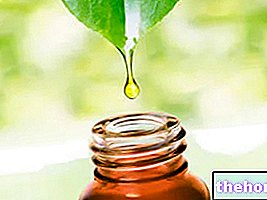
Cough is a complex reflex that involves both the central and peripheral nervous systems, but also the bronchial smooth muscle.
Causes
A "hypothesis on the etiology of cough is the following: the irritation of the bronchial mucosa causes broncho-constriction, which in turn stimulates the cough receptors (a specialized type of tensoreceptors) located in the tracheobronchial passages; from these" sensors "signals start along the pathways afferent to the vagus nerve, which reach the bulbar center of the cough (near the floor of the fourth ventricle) where pathways of integration connect cortical and subcortical neurons to the bulbar center; hence the efferent pathways, therefore outgoing from the CNS, they follow the inferior laryngeal nerve, the phrenic nerve and some spinal nerves and stimulate the larynx, the tracheobronchial shaft, the diaphragm and the accessory respiratory muscles, triggering the cough.
When the cough loses this character and becomes chronic and persistent, it causes intense malaise that significantly reduces the quality of life: if it takes on connotations of particular severity and duration, and is associated with other specific clinical signs, the cough can be defined as pathological .
For cough, different stimuli can be identified:
- Thermal: cold air, too hot and dry air;
- Mechanical: intraluminal foreign material;
- Chemicals: acids, gases, fumes, perfumes, ammonia;
- Allergic;
- Parasites;
- Neoplasms;
- Stress.
The cough mechanism can be divided into 3 main mechanical phases:
- Inspiratory phase: during this phase there is a contraction of the abductor muscles of the arytenoid cartilages and, in voluntary cough, 50% of vital capacity is commonly reached; therefore, the effectiveness of coughing is greater the higher the inspired volume is.
- Compression phase: after the inspiratory phase there is the closure of the glottis and the contraction of the thoraco-abdominal muscles, which together lead to an increase in thoracic pressure.
- Expulsive phase: following the increase in chest pressure, the glottis is opened after about 0.2-0.3 seconds and the air exits explosively at high speed; it is precisely this mechanism that generates the characteristic noise of coughing.
Dry cough is a non-productive cough, so the choice of drug must fall on a cough suppressant, since it is the cause of the symptoms that must be treated in the first place.
The fatty cough represents a productive cough, with the presence of phlegm: if the mucus stagnates in the bronchi, in addition to making breathing difficult, it is an excellent breeding ground for microbes, which will then cause respiratory tract infections; in cases where there is production of phlegm it is therefore advisable to favor its expulsion by making it more fluid: then we resort to mucolytic and expectorant drugs.
Cough treatment drugs can be distinguished into several categories:
Sedative Cough Drugs
These drugs are used when it is necessary to suppress the symptom without interfering with the pathological picture that generated it (dry cough).
It is possible to distinguish antitussive drugs with central action, which act on the bulbar center of cough (opioid analgesics, dextromethorphan, codeine, levopropoxyphene, noscapine, which are among the most effective), or with peripheral action; the latter inhibit the cough reflex in its afferent portion (local and demulcent anesthetics form a protective layer that covers the irritated mucosa: examples are syrups and tablets based on acacia, licorice, glycerin and honey).
Expectorant drugs
They are medicines that increase the volume of mucus in bronchial secretions, facilitating their elimination: they stimulate the activity of the bronchial glands and increase the aqueous component of the secretion (guaifenesin, guaiacolsulfonate).
In addition to the use of these active ingredients, proper hydration is the single most important precaution that can be adopted to promote expectoration.
Mucolytic drugs
Drugs belonging to this category contain active ingredients with free sulfhydryl groups, capable of breaking the disulfide bridges of the mucoproteins and thus reducing the viscosity of the mucus (for example, ambroxol, carbocystene, etc.).
plays a very important role: medicinal plants are frequently used to relieve pain caused in the pharynx and larynx, but also to help expel mucus and thus free the airways.
Expectorant, emollient and fluidifying drugs are useful for cough and phlegm, as they are capable of modifying bronchial secretions.
Medicinal plants with emollient action act on inflamed mucous membranes, thus reducing irritation: these plants are rich in mucilaginous substances which, thanks to their physical properties, are stratified on the mucous membranes, covering them with a layer that protects them from irritative stimuli.
Mucilages are nothing more than polysaccharides, amorphous substances that swell in contact with water, giving rise to colloidal and viscous solutions with local anti-inflammatory action on the tissues with which they come into contact.
The main functions of medicinal plants and emollient herbal teas are to lubricate the respiratory mucosa, mitigate the burning sensation and congestion present due to inflammation, attenuate bronchial secretions and reduce the stimulus of cough.
Plants with emollient action:
- Altea Althaea officinalis;
- Iceland lichen Cetraria islandica;
- Mauve Malva sylvestris;
- Plantain Plantago lanceolata;
- Coltsfoot Tussilago farfara.
In addition to plants with an emollient action, expectorant drugs also play an important role in therapeutic cough teas: they are plants rich in saponins that have the function of thinning secretions and facilitating their expulsion.
Plants with expectorant action:
- Horehound Marrubium vulgare;
- Saponaria Saponaria officinalis;
- Primrose Primula officinalis;
- Hyssop Hyssopus officinalis.
- Go to the Video Page
- Go to the Video Recipes Section
- Watch the video on youtube




























